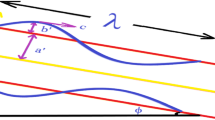Abstract
Non-equilibrium molecular dynamics(MD) simulations were performed according to the electronic anti-fouling technology, and some structural parameters and dynamic parameters of CaCl2 aqueous solution were taken as indicators to compare the different effect on the anti-fouling performance by applying different electric fields. The results show that electric fields can effectively decrease the viscosity of CaCl2 aqueous solution and enhance the ionic activity by enlarging the self-diffusion coefficient. In addition, with the same electric field strength, the electrostatic field is more effective at decreasing the viscosity of CaCl2 aqueous solution and increasing the self-diffusion coefficient of water molecules, while the alternating electric field is more effective at increasing the self-diffusion coefficient of Ca2+. Furthermore, an alternating electric field with different frequencies was applied; the results show that an 800 kHz frequency is most effective to decrease the viscosity, and a 700 kHz frequency is most effective to enhance the self-diffusion coefficient of water molecule. Otherwise, 400 kHz is most effective to enhance the self-diffusion coefficient of Ca2+. Additionally, by studying the change of structure parameters, it was concluded that an external electric field can enhance the hydration between Ca2+ and coordinated water molecules, and the alternating electric field is more effective in this respect.
Similar content being viewed by others
References
Steinhagen R., Müller-Steinhagen H., Maani K., Heat. Transfer. Eng., 1993, 14(1), 811
Chen C., Liu R., Science Technology and Engineering, 2009, 15(9), 4567
Ge H., Wei C., Acta Chimica Sinica, 2011, 69(19), 2313
Xing X., Jing D., Journal of Engineering for Thermal Energy and Power, 2007, 22(3), 336
Cho Y. I., Liu R., Int. J. Heat. Transfer. Eng., 1999, 42, 3037
Xing X., Ma C., Chen Y., Chem. Eng. Technol., 2005, 28(12), 1540
Zhao G., Liu J., Zhou L., Han K., J. Phys. Chem. B, 2007, 111(30), 8940
Zhao G., Han K., Accounts, Chem. Res., 2012, 45(3), 404
Chen J., Yuan M., Wang J., Yang Y., Chu T., J. Phys. Chem. A, 2014, 118(39), 8986
Yamaguchi T., Hayashi S., Ohtaki H., Inorg. Chem., 1989, 28(12), 2434
Probst M. M., Radnai T., Heinzinger K., Bopp P., Rode B. M., J. Phys. Chem., 1985, 89(5), 753
Hewish N. A., Neilson G. W., Enderby J. E., Nature, 1982, 297, 138
Fulton J. L., Chen Y., Heald S. M., Balasubramanian M., J. Chem. Phys., 2006, 125(9), 094507
Licheri G., Piccaluga G., Pinna G., J. Chem. Phys., 1976, 64, 2437
Marcus Y., Chem. Rev., 1998, 88, 1475
Hess B., Kutzner C., van der Spoel D., Lindahl E., J. Chem. Theory Comput., 2008, 4(3), 435
Chialvo A. A., Simonson J. M., J. Chem. Phys., 2003, 119(15), 8052
Li M., Duan Z., Zhang Z., Zhang C., Weare J., Mol. Phys., 2008, 106(24), 2685
Gunsteren W. F. V., Biomolecular Simulation: the GROMOS96 Manual and User Guide, Zürich, Groningen, 1996
Allen M. P., Tildesley D. J., Computer Simulation of Liquids, Clarendon Press, Oxford, 1989
Han Y., Zhao Y., Chai X., Liu X., Electr. Mach. Contrl., 2011, 15(9), 31
Hertz H. G., Mills R., J. Phys. Chem., 1978, 82(8), 952
Han Y., Zhao Y., Int. J. Electrochem. Sci., 2012, 7(10), 10008
Hess B., J. Chem. Phys., 2002, 116, 209
Ding K., Journal of Hebei University of Engineering(Natural Science Edition), 2010, 27(3), 14
Darden T., York D., Pedersen L., J. Chem. Phys., 1993, 98, 10089
Le D. T., Ren F., Zhang M., J. Heat. Mass. Transf., 2010, 53(s7/8), 1426
Author information
Authors and Affiliations
Corresponding author
Additional information
Supported by the National Natural Science Foundation of China(No.51408525).
Rights and permissions
About this article
Cite this article
Han, Y., Zhu, L. & Zhang, Y. Molecular dynamics simulation for the impact of external electric fields on CaCl2 aqueous solution. Chem. Res. Chin. Univ. 32, 641–646 (2016). https://doi.org/10.1007/s40242-016-6106-6
Received:
Accepted:
Published:
Issue Date:
DOI: https://doi.org/10.1007/s40242-016-6106-6




